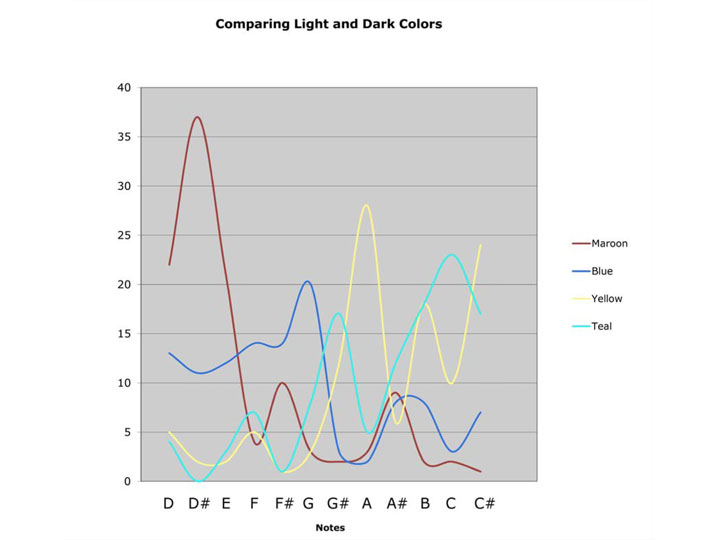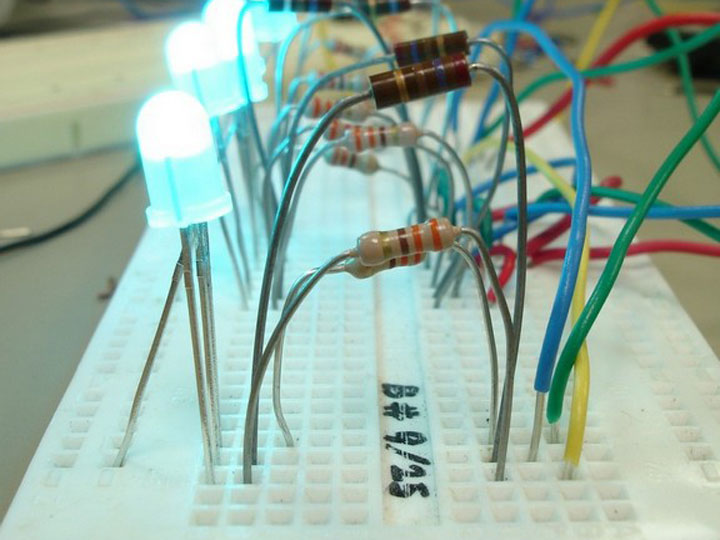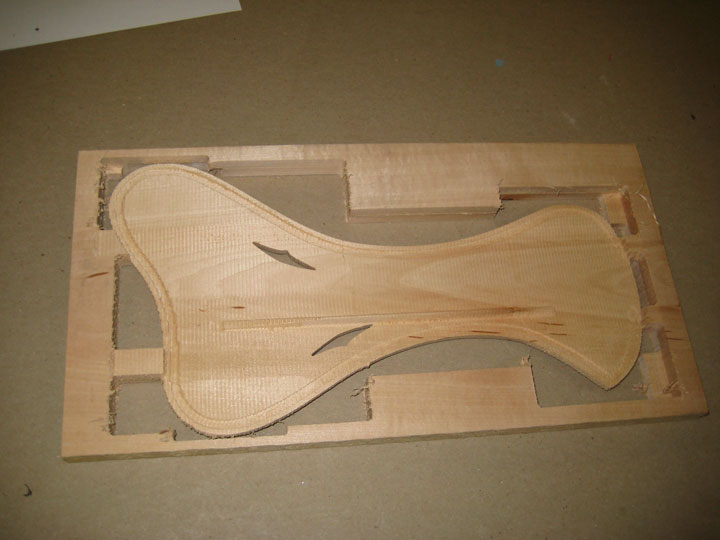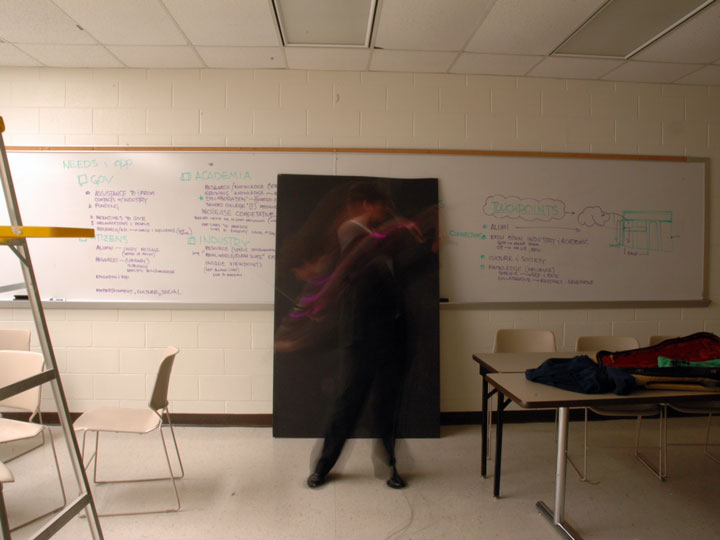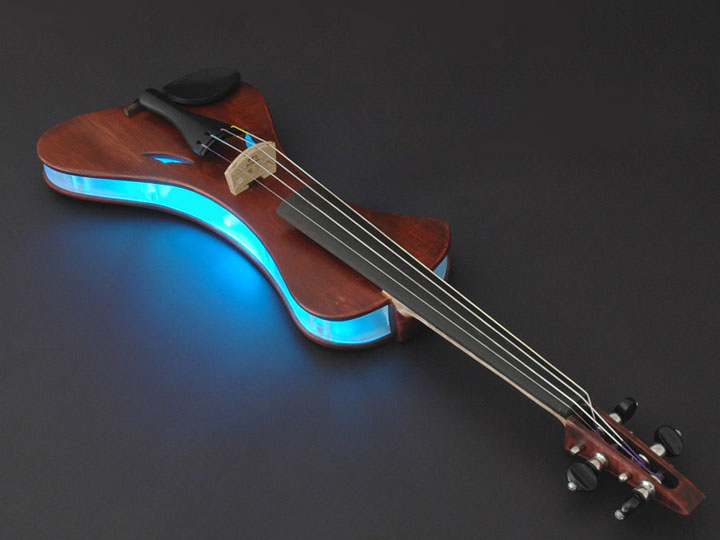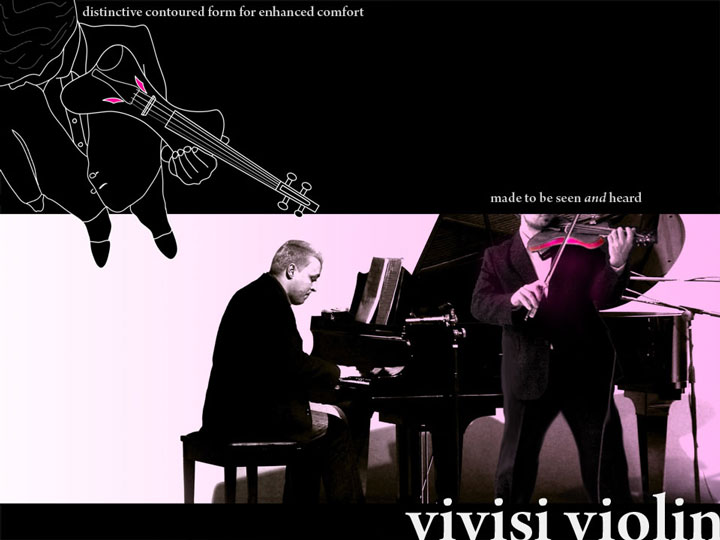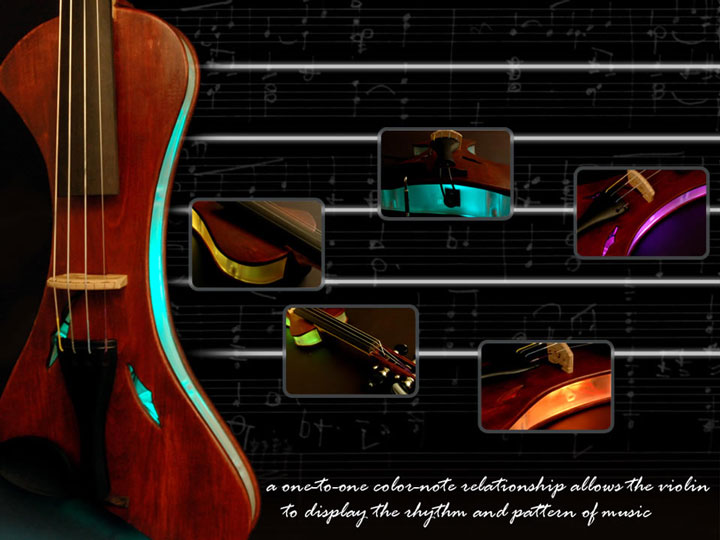Vivisi Violin
I graduated in 2008 from Auburn University's Graduate Industrial Design Program. My master thesis is titled Illuminating Music: A Product Design Study Applying Synesthesia and Ambient Peripheral Display Theory to the Violin. The result of the thesis is an electric violin integrated with a music illumination system, designed to bring a visualization to the rhythm, pattern and dynamics of music played on the instrument.
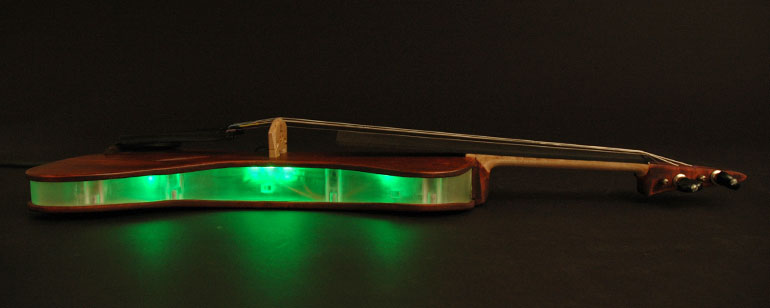
Project Details
This comprehensive study covered the history of the violin, ambient peripheral displays, color organs and other synesthetic art, as well as the design and construction of an electric violin with a system of LEDs housed inside the instrument.
The goal of the music illumination system was to show a one-to-one, color-to-note relationship between notes played on the violin and the color glowing from the interior of the instrument. Also, dynamic changes in volume were depicted in the brightness of the light. These visualizations were intended to be a precise depiction of solo instrumental music, for both the hearing and hearing impaired.
-

-
Research
The majority of the research conducted for this project was an investigation of how people relate color to musical notes. I used a custom computer program to run tests where subjects were asked to pair musical notes with the color they thought best depicted the note. The hypothesis was that color scales would be highly personalized and that no theme would emerge. Although out of 116 participants, no two people had the same color scale, After examining the data, a theme did emerge. Darker colors were more often paired with lower notes and brighter colors were more often paired with higher notes.
Form Development
The form of an acoustic violin is heavily guided by acoustics. Since this project was an electric violin, more consideration could be made to the physical form as it relates to the human body. The touch point between the violinist's neck and the base of the violin was made engage more of the neck, reducing the acute pressure point found with acoustic violins.
Fabrication
The four main parts of the violin were modeled in Rhino, milled on a 5-axis cnc machine, and then hand finished. The electronics did not work live (hopefully one day they will), but with the help of an Arduino, I was able to successfully show the concept by recording audio, running it through Tartini, writing code to control the lights based on the recorded sound, and then "bow-syncing" to the audio track.
